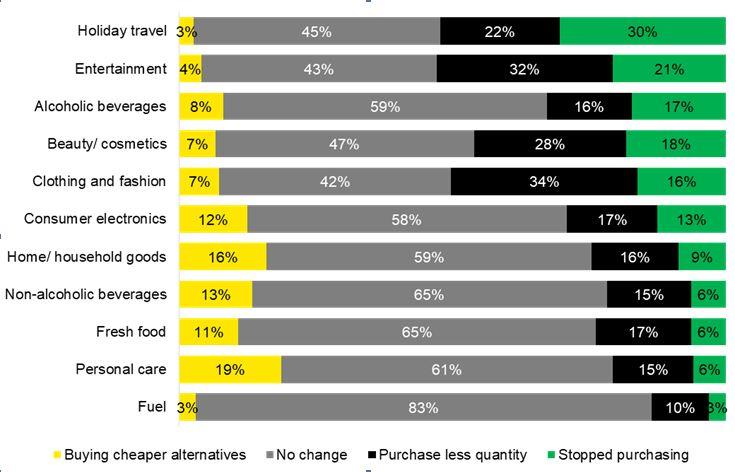Over the past few years, business leaders have been looking forward to a time when consumer behaviour would return to some kind of normality. Just when it looked like we might be reaching that moment, events taking place around the world are reshaping that paradigm once more.
The 6th edition of the EY Malta Future Consumer Index shows that in a time of rising inflation and global turmoil, people are fundamentally rethinking how they live their lives and asking themselves what relationship they really want with consumerism and its values.
Simplicity and escapism are increasingly valued
Concerns around COVID-19 are receding and people want to make up for lost time and escape the pressures of the post-pandemic world. Over 70% of local consumers are amenable to take an international vacation while 23% of respondents say they will eat out more often at a restaurant.
Globally, 39% of younger generations say they will spend more on vacations this year, while 45% of consumers say they plan to live more in the moment and not plan for the long term. The modest post-pandemic lifestyle that many consumers plan to live is one that puts a higher value on experiences, with 42% saying they plan to spend more in this category. In line with the growing desire for simple flexibility, the most appealing experiences will be those that are easy to access and take minimal time investment. That means more digital experiences and quick, last-minute getaways.
Emerging worries among consumers
Even before the war in Ukraine, consumers around the world were not optimistic about the future. Inflation was returning. Their work and personal lives had changed. Our Index shows it's no longer just low-income consumers who are worried.
While the middle classes are most aware of rising prices, inflation is causing consumers at all income levels to change their shopping behaviours and purchase decisions. Overall, 35% of consumers surveyed locally say the increasing cost of goods and services is making it harder to afford things. People are making the most changes in how they purchase non-essentials, such as clothing and entertainment, to be able to afford gas and fresh food, where there are fewer alternatives.
With their spending power eroding, consumers are planning to rein-in their consumption, trade down to cheaper alternatives, and purchase fewer non-essentials. The categories most affected are holiday travel and entertainment; beauty and cosmetics; and clothing and shoes.
Change in product purchases as a result of price increases

Maybe not surprisingly, our local research shows that financial concerns are more pronounced among older segments of the population - 37% of retired consumers expect to be worse off financially in the next 12 months compared to 17% of people aged between 18 and 40 years old.
The difference in generational consumer behaviour emerges strongly not only with respect to financial outlook, but also in the way people interact with, and use e-commerce platforms locally. The dynamics of inflationary risk, geopolitical uncertainty, and the persistent shift towards e-commerce, signal a number of imperatives that need to be considered by business and retailers:
- Explore new ways to reach consumers: As consumers turn inwards, brands will find it harder to get their attention. Companies must identify and invest in emerging or evolving physical and digital touchpoints, so they are present at the point of need. This means going a step further to ensure that every potential channel to engage or be visible to the consumer is explored and can be easily integrated into the brand experience.
- Contextualize your brand experience: Companies need to reconsider the context in which they try to engage the consumer. People's routines have become increasingly fragmented. Brands must have the digital capabilities to understand the growing range of consumer needs based on contextual indicators and to quickly respond with the right offering.
- Make it easy to access: In a world where people are consuming less, focusing more on affordability and retreating from engagement opportunities, it's never been more important to eliminate consumer pain points. If consumer expectations for quick and easy purchases were high before the pandemic, their expectations now of frictionless brand experiences are exponentially higher. Brands must explore how best to drive stickiness, ensuring consumers are spending the right amount of time in each phase of the consumer journey. However, the actual act of purchasing needs to be simple, quick and easy.
- Explore partnerships that create collective value: Selling a product to a consumer may get harder, especially on your own, but if you work within an ecosystem of partners then the path to purchase will become clearer. As consumers become more focused on their holistic priorities, they will seek out flexible solutions that work for multiple needs rather than individual products that serve a specific one. This means that brands can work with other brands and other sectors and industries to come together to reach and meet consumer needs optimally.
Methodology
The 6th EY Future Consumer Survey Malta was carried out in May 2022 across a stratified random sample of 835 participants. The survey is conducted periodically to capture changes in consumption and consumer behaviour.